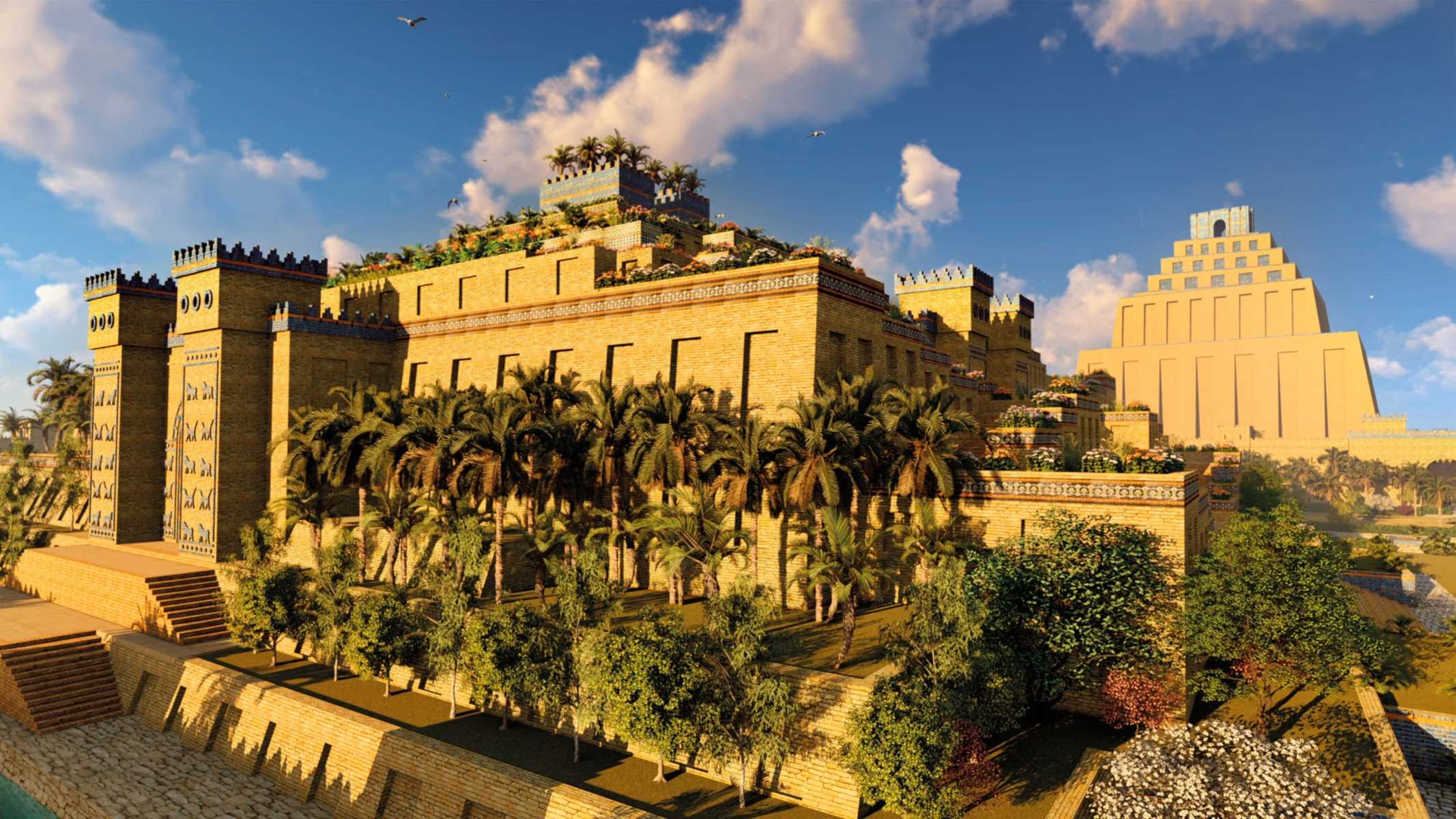
What happened during the Babylonian attack on the Sealand Dynasty? The Sealand Dynasty, a lesser-known yet crucial part of ancient Mesopotamian history, faced numerous challenges, including the formidable Babylonian Empire under King Hammurabi. Emerging in the late 18th century BCE, the Sealand Dynasty controlled a marshy region in southern Mesopotamia. This area was strategically vital due to its proximity to the Euphrates River and key trade routes. The dynasty's rulers, adopting pseudo-Sumerian names, had mostly hostile relations with Babylon. The Kassites, another powerful group, also posed significant threats, eventually leading to the dynasty's downfall. Despite these challenges, the Sealand Dynasty made notable cultural and economic contributions, leaving a lasting legacy in Mesopotamian history.
The Rise of the Sealand Dynasty
The Sealand Dynasty emerged during a time of great fragmentation in Mesopotamia. This period saw various city-states and kingdoms vying for power.
-
Emergence of the Sealand Dynasty: The Sealand rulers adopted pseudo-Sumerian names, identifying themselves with the prestigious ancient city-state of Isin. However, the majority of the population used the Akkadian language in their daily lives.
-
Geographical Location: The Sealand region was located in the marshy area of southern Mesopotamia, roughly equivalent to the southeast wedge of modern Iraq. This strategic location near the Euphrates River allowed control over vital trade routes.
Key Figures and Fortifications
Several notable rulers and significant fortifications played crucial roles in the Sealand Dynasty's history.
-
Administrative Center at Tell Khaiber: Excavations at Tell Khaiber, near modern Nasiriyah and ancient Ur, revealed an administrative center connected to the Sealand Dynasty. The building featured a massive mudbrick wall and close-set towers, unusual for Bronze Age Mesopotamian architecture.
-
Ayadaragalama and the Sealand Kingdom: Ayadaragalama, the eighth Sealand king, ruled around 1500 BCE. His reign was marked by invasions from the Kassites and Elamites. Inscribed clay tablets discovered at Tell Khaiber place his reign squarely within the Sealand kingdom.
Conflicts and Invasions
The Sealand Dynasty faced numerous threats from neighboring powers, leading to significant conflicts and eventual downfall.
-
Kassite Invasions: The Kassites, who seized much of the Babylonian Empire between 1600-1500 BCE, posed a significant threat to the Sealand Dynasty. Their invasions led to the exile of Ea-gâmil, the final king of the dynasty, who fled to Elam ahead of an army led by Ulam-Buriaš, the brother of the Kassite king of Babylon Kashtiliash III.
-
Gulkišar and His Epic: Gulkišar, meaning “raider of the earth,” was the subject of a royal epic concerning his enmity with Samsu-ditāna, the last king of the first dynasty of Babylon. This epic provides valuable insights into the political and cultural dynamics of the time.
Relations with Babylon
The Sealand Dynasty had a complex and mostly hostile relationship with Babylon, marked by numerous conflicts.
-
Sealand Relations with Babylon: The Sealand Dynasty had mostly hostile relations with Babylon. The epic in honor of Gulkišar shows him preparing to do battle against Hammurabi’s last successor, Samsuditana. These conflicts highlight the complex political landscape of ancient Mesopotamia.
-
Ayadaragalama’s Reign: Ayadaragalama’s reign was marked by significant events, including the expulsion of the “massed might of two enemies,” speculated to be Elamites and Kassites. This period of turmoil underscores the challenges faced by the Sealand Dynasty during its existence.
Archaeological Discoveries
Recent archaeological discoveries have provided valuable insights into the Sealand Dynasty's history and culture.
-
Pešgaldarameš and Ayadaragalama: Pešgaldarameš, “son of the ibex,” and Ayadaragalama, “son of the clever stag,” were successive kings and descendants of Gulkišar. Their reigns continued the tumultuous history of the Sealand Dynasty, with Ayadaragalama’s reign being particularly eventful.
-
Archaeological Discoveries: The discovery of inscribed clay tablets at Tell Khaiber has provided significant archaeological evidence about the Sealand Dynasty. These tablets include administrative documents and literary texts, which have helped in reconstructing the history of this enigmatic dynasty.
Language and Culture
The Sealand Dynasty had a rich cultural heritage, with a unique blend of languages and traditions.
-
Language and Culture: The Sealand rulers adopted pseudo-Sumerian names, but the majority of the population used Akkadian in their daily lives. The University of Chicago has released its twenty-one volume dictionary of Akkadian, which is an invaluable source for studying the language and culture of the ancient Near East.
-
Ayadaragalama’s Fortifications: The administrative center at Tell Khaiber was heavily fortified, with a massive mudbrick wall and close-set towers. This fortification suggests that the Sealand rulers were aware of the threats they faced and took measures to protect their territory.
The Fall of the Sealand Dynasty
The Sealand Dynasty eventually fell to the Kassites, marking the end of an era in Mesopotamian history.
-
Kassite Conquest: The Kassites eventually conquered the Sealand territory, forcing Ea-gâmil into exile. This conquest marked the end of the Sealand Dynasty and had significant implications for the political landscape of Mesopotamia.
-
Historical Context: The Sealand Dynasty existed during a time of great turmoil in Mesopotamia. The rise of the Babylonian Empire under King Hammurabi and the subsequent invasions by the Kassites created a complex web of alliances and conflicts that shaped the history of this region.
Economic and Cultural Contributions
Despite the challenges, the Sealand Dynasty made significant contributions to Mesopotamian culture and economy.
-
Babylonian Expansion: King Hammurabi’s expansion of the Babylonian Empire posed a significant threat to the Sealand Dynasty. His military campaigns and strategic alliances with other city-states further complicated the political dynamics of the region.
-
Sealand’s Economic Activities: The Sealand Dynasty engaged in various economic activities, including trade and commerce. The discovery of administrative tablets at Tell Khaiber provides insights into the economic activities of this dynasty, including its administrative practices and trade networks.
-
Cultural Achievements: Despite the challenges they faced, the Sealand Dynasty made significant cultural achievements. The discovery of literary and scholarly tablets suggests that the Sealand rulers valued education and literature, contributing to the rich cultural heritage of Mesopotamia.
Religious Beliefs and Medical Contributions
The Sealand Dynasty's religious beliefs and medical contributions were integral to their society.
-
Religious Beliefs: The Sealand Dynasty, like other Mesopotamian civilizations, believed in polytheism. The worship of multiple gods and goddesses, including Marduk, Samas, Dumuzid, and Ishtar, was an integral part of their religious practices. The priests lived on the top floor of ziggurat temples, leading the people in worship and predicting the future.
-
Medical Contributions: The Babylonians, including those from the Sealand Dynasty, made significant contributions to medicine. The Diagnostic Handbook, written by the ummânū (king’s chief scholar), introduced the world to the concept of diagnosis, prescription, prognosis, and physical examination. This work included a list of medical symptoms, logical steps for diagnosis, and treatments such as bandages, pills, and therapy.
-
Legacy of the Sealand Dynasty: Despite its eventual fall, the Sealand Dynasty left a lasting legacy in the history of Mesopotamia. The archaeological discoveries at Tell Khaiber and other sites have provided valuable insights into the administrative, economic, cultural, and religious practices of this enigmatic dynasty. The study of the Sealand Dynasty continues to enrich our understanding of ancient Mesopotamian history and culture.
The Sealand Dynasty's Enduring Legacy
The Babylonian attack on the Sealand Dynasty was a pivotal moment in ancient Mesopotamian history. Emerging in the late 18th century BCE, the Sealand rulers faced constant threats from powerful neighbors like the Kassites and the Babylonian Empire. Despite these challenges, they managed to leave a lasting mark through their administrative centers, fortifications, and cultural achievements. The discovery of inscribed clay tablets at Tell Khaiber has shed light on their economic activities and daily life. Though the Kassites eventually conquered the Sealand territory, forcing the last king into exile, the dynasty's contributions to medicine, literature, and religion remain significant. The Sealand Dynasty's story enriches our understanding of the complex web of alliances, conflicts, and cultural developments that defined ancient Mesopotamia. Their legacy continues to captivate historians and archaeologists alike.
Was this page helpful?
Our commitment to delivering trustworthy and engaging content is at the heart of what we do. Each fact on our site is contributed by real users like you, bringing a wealth of diverse insights and information. To ensure the highest standards of accuracy and reliability, our dedicated editors meticulously review each submission. This process guarantees that the facts we share are not only fascinating but also credible. Trust in our commitment to quality and authenticity as you explore and learn with us.


